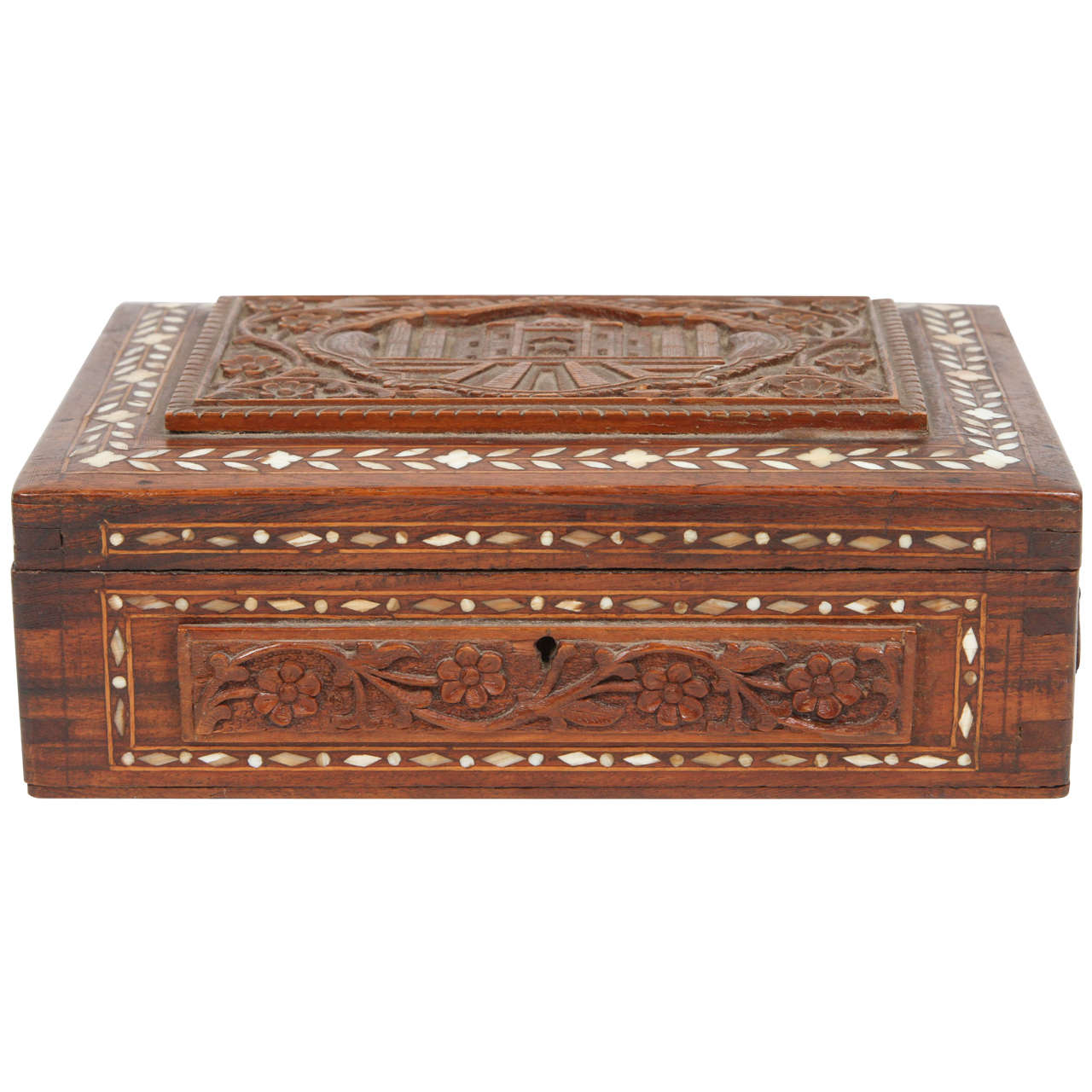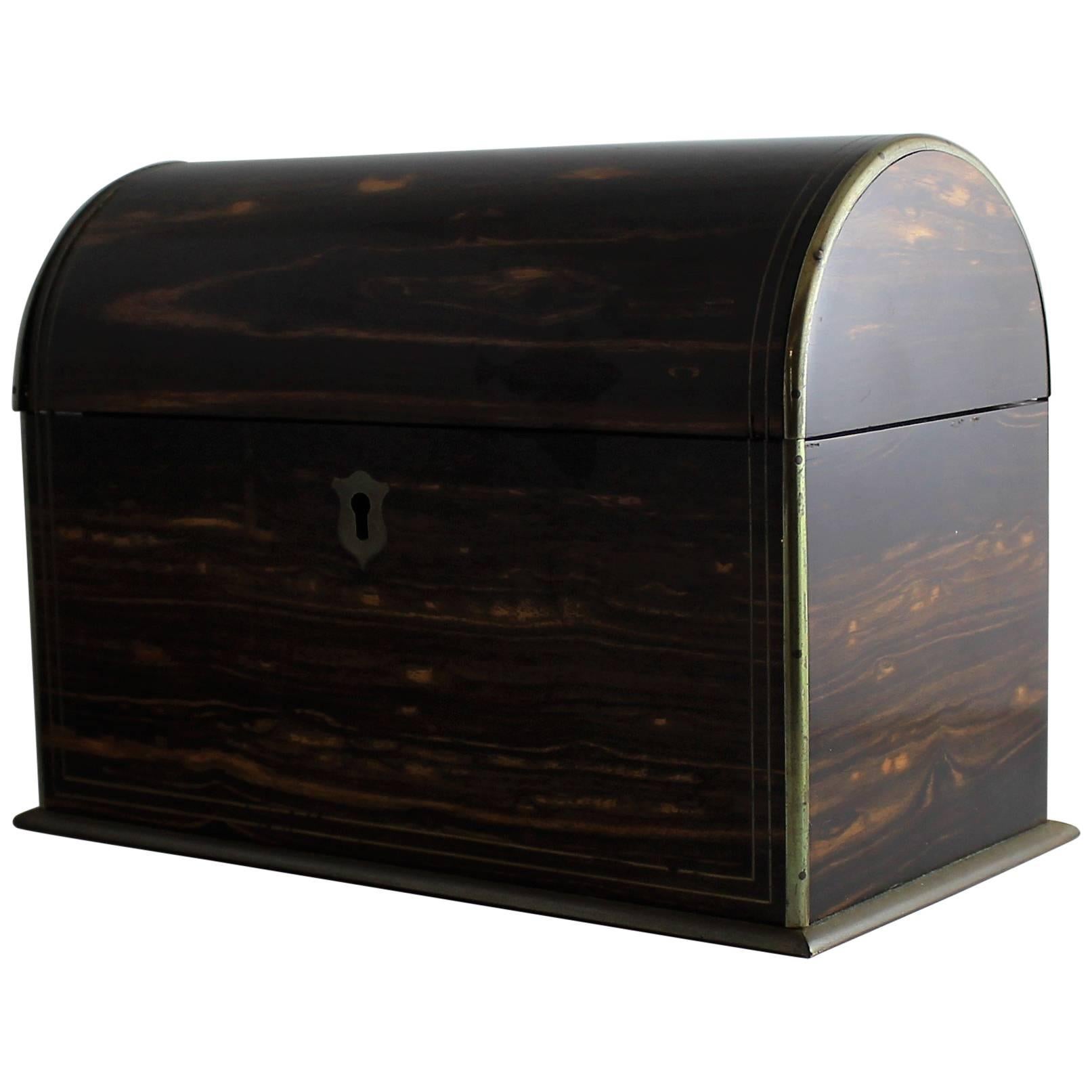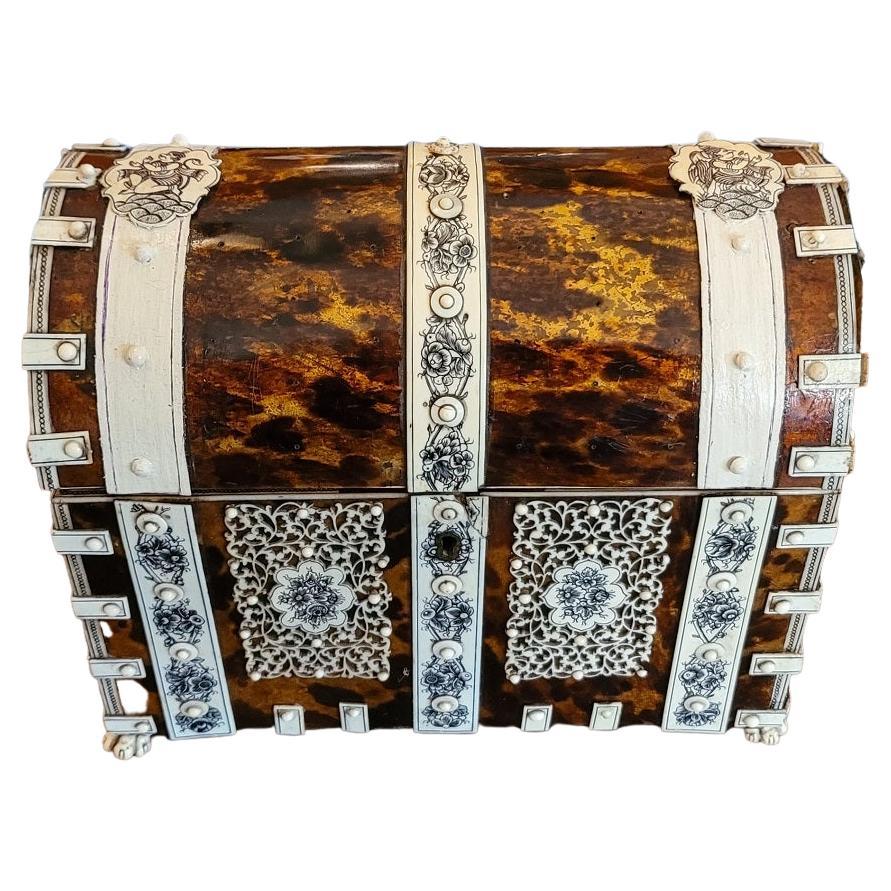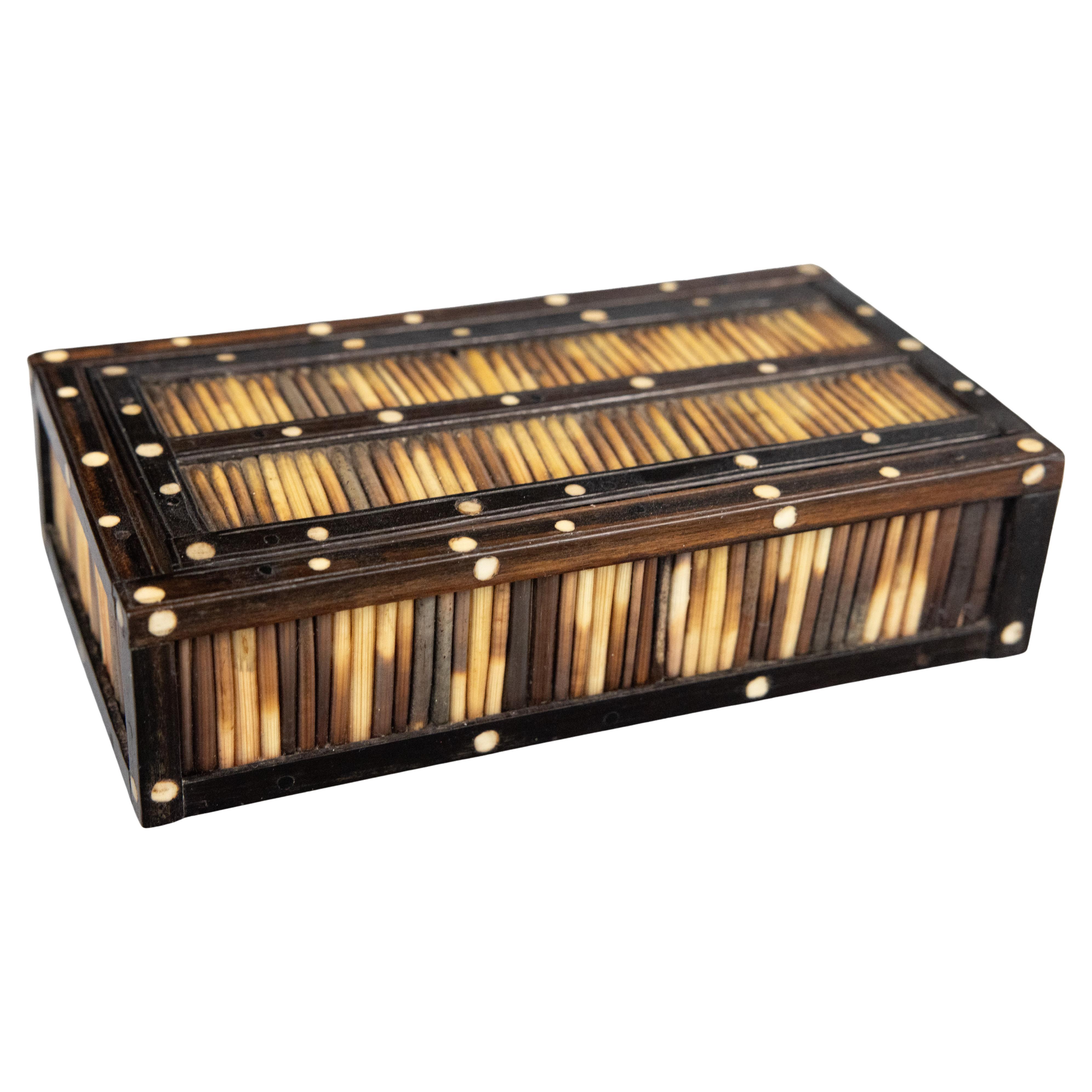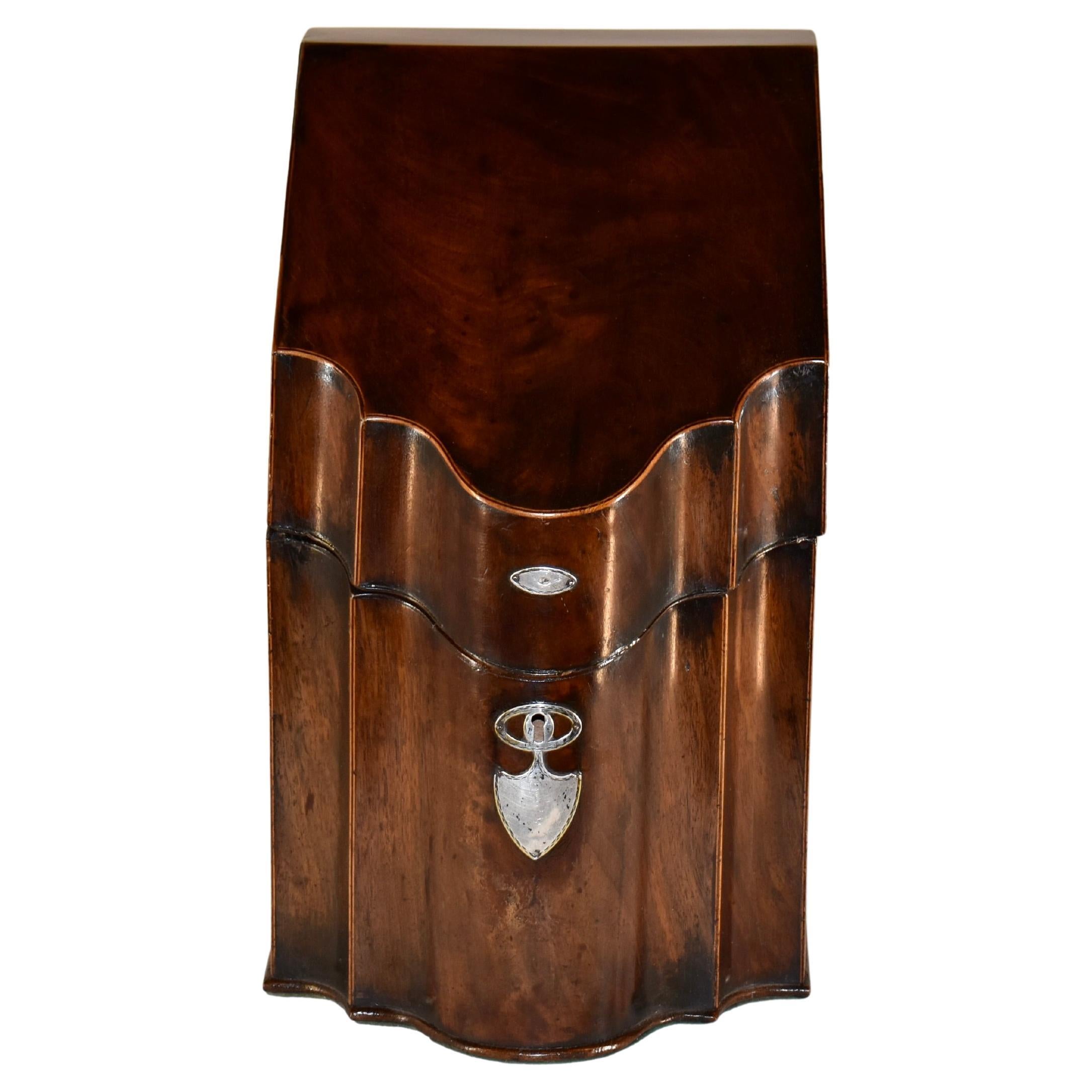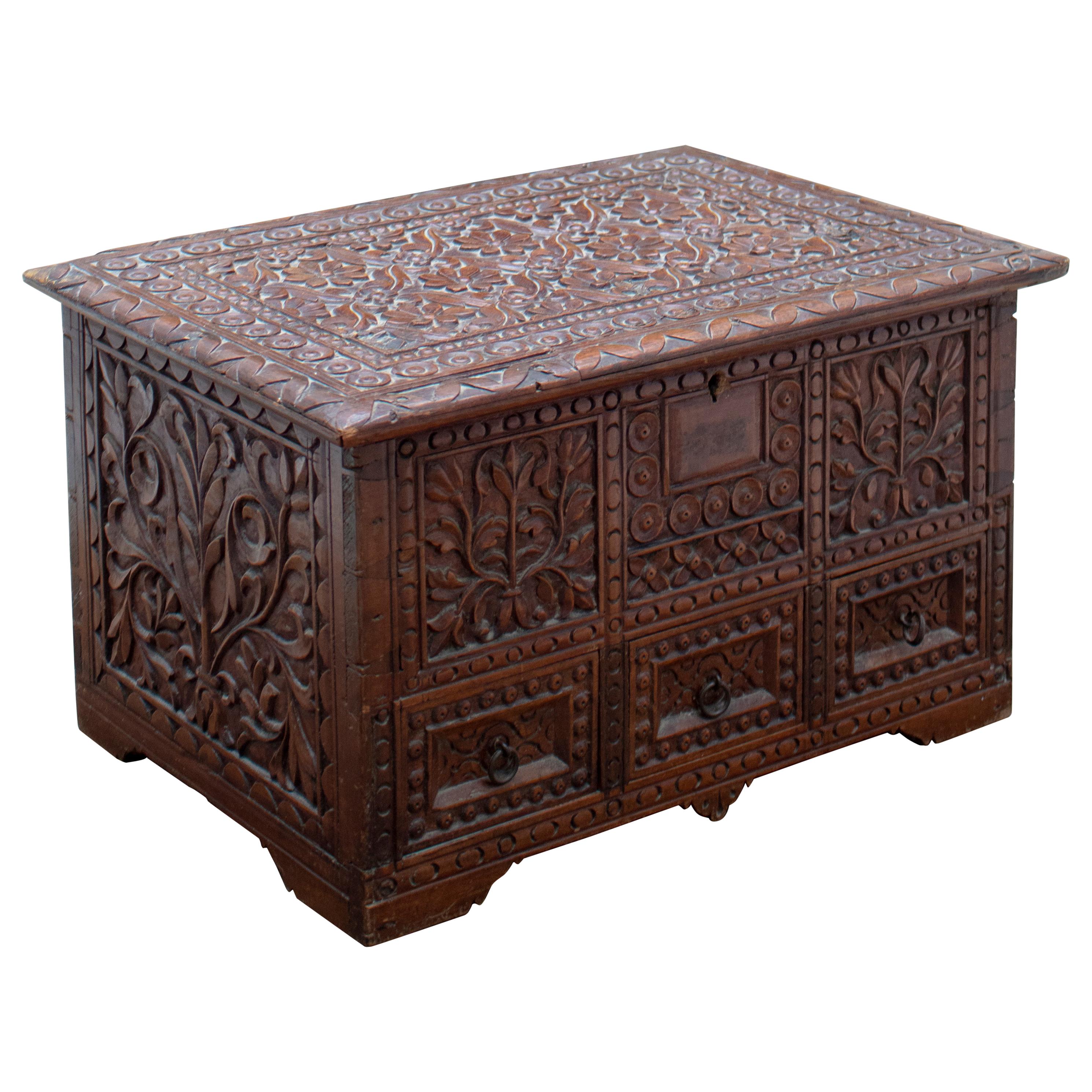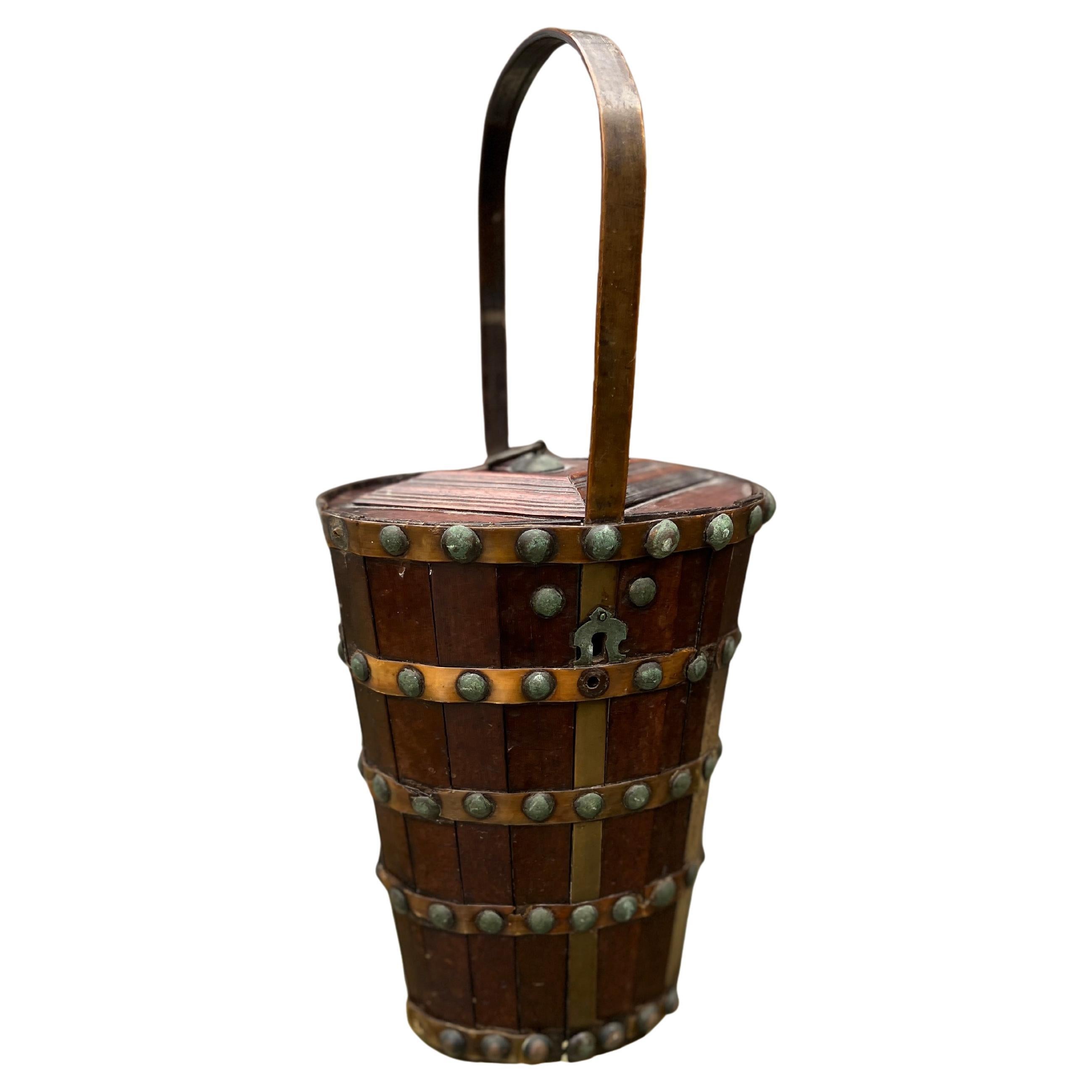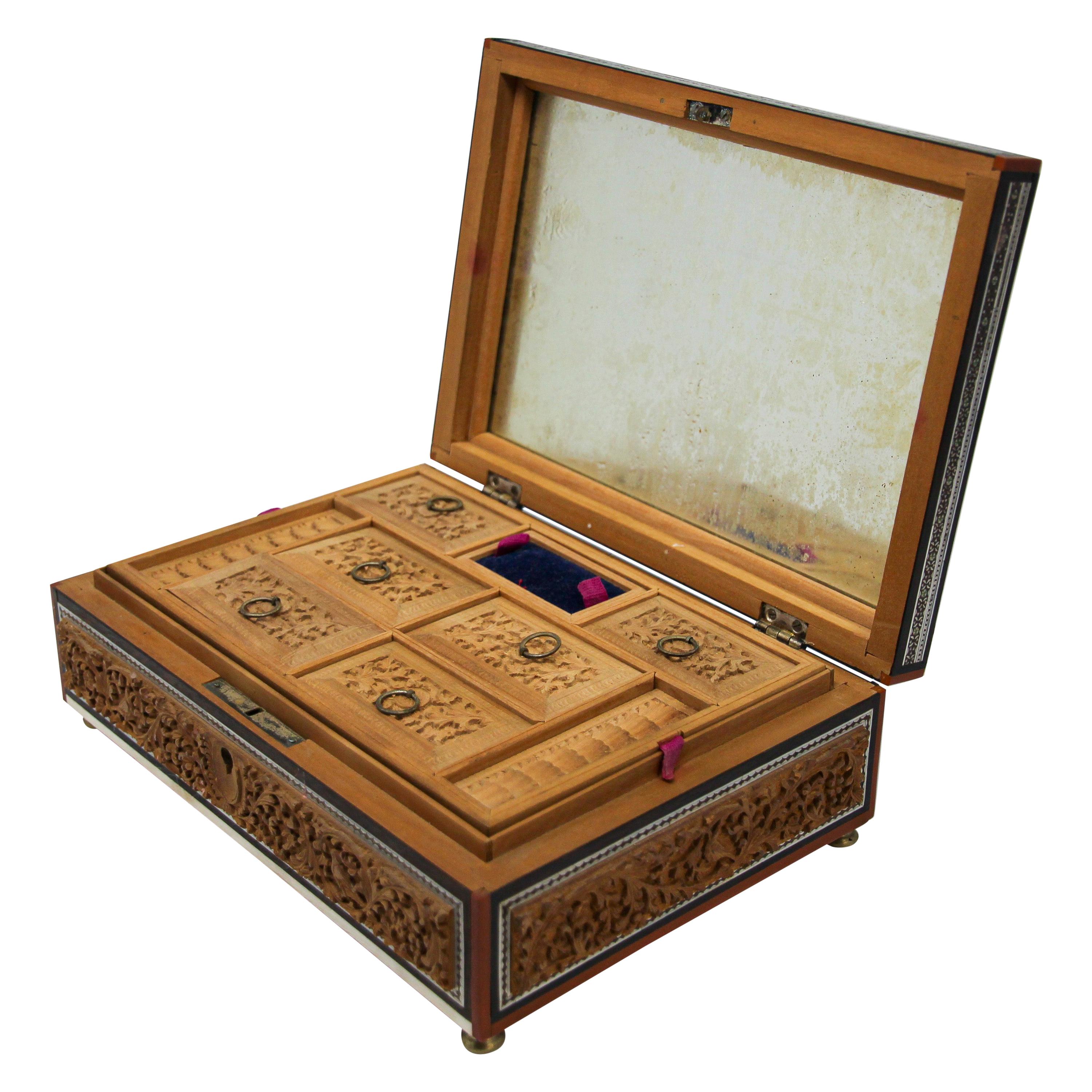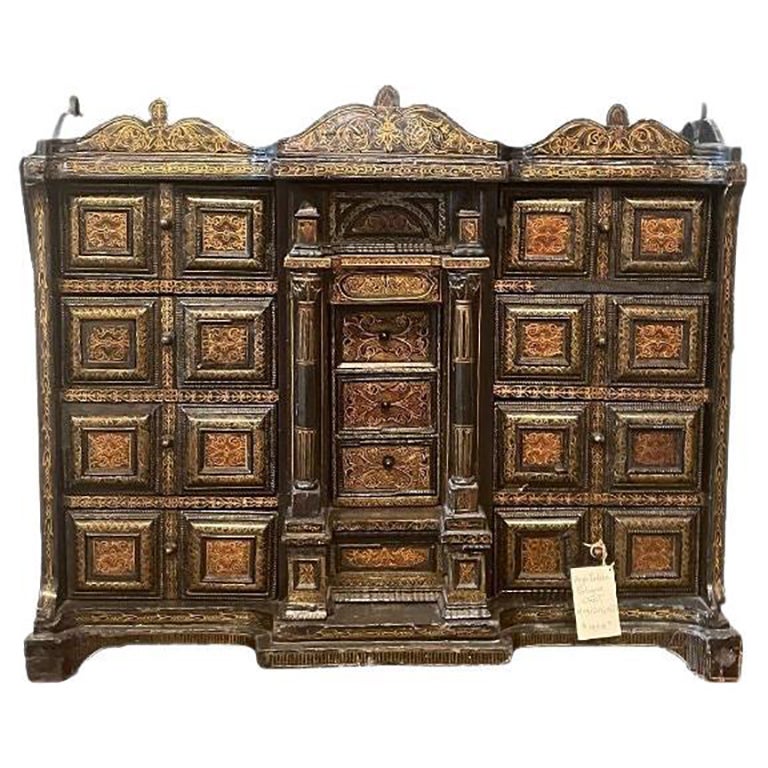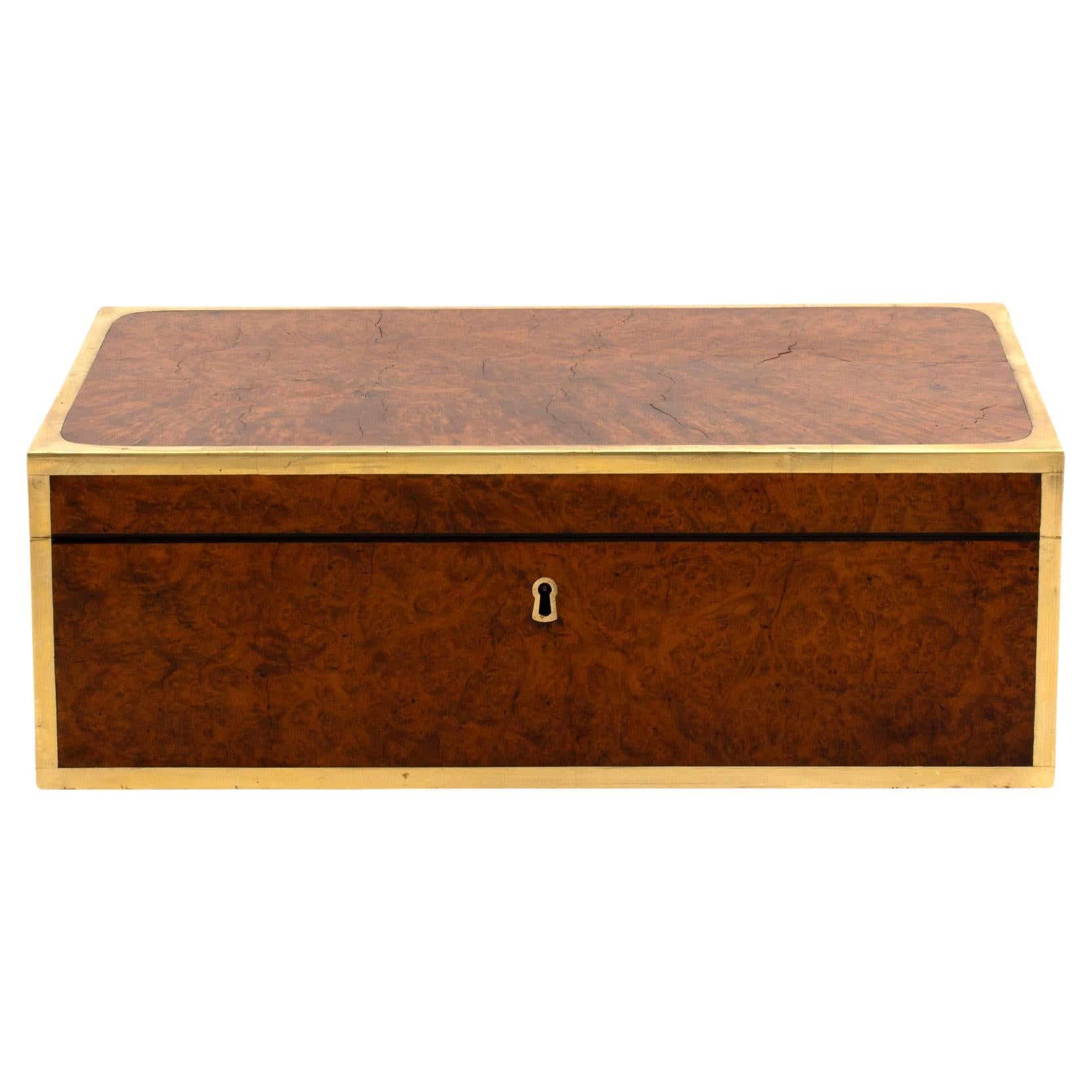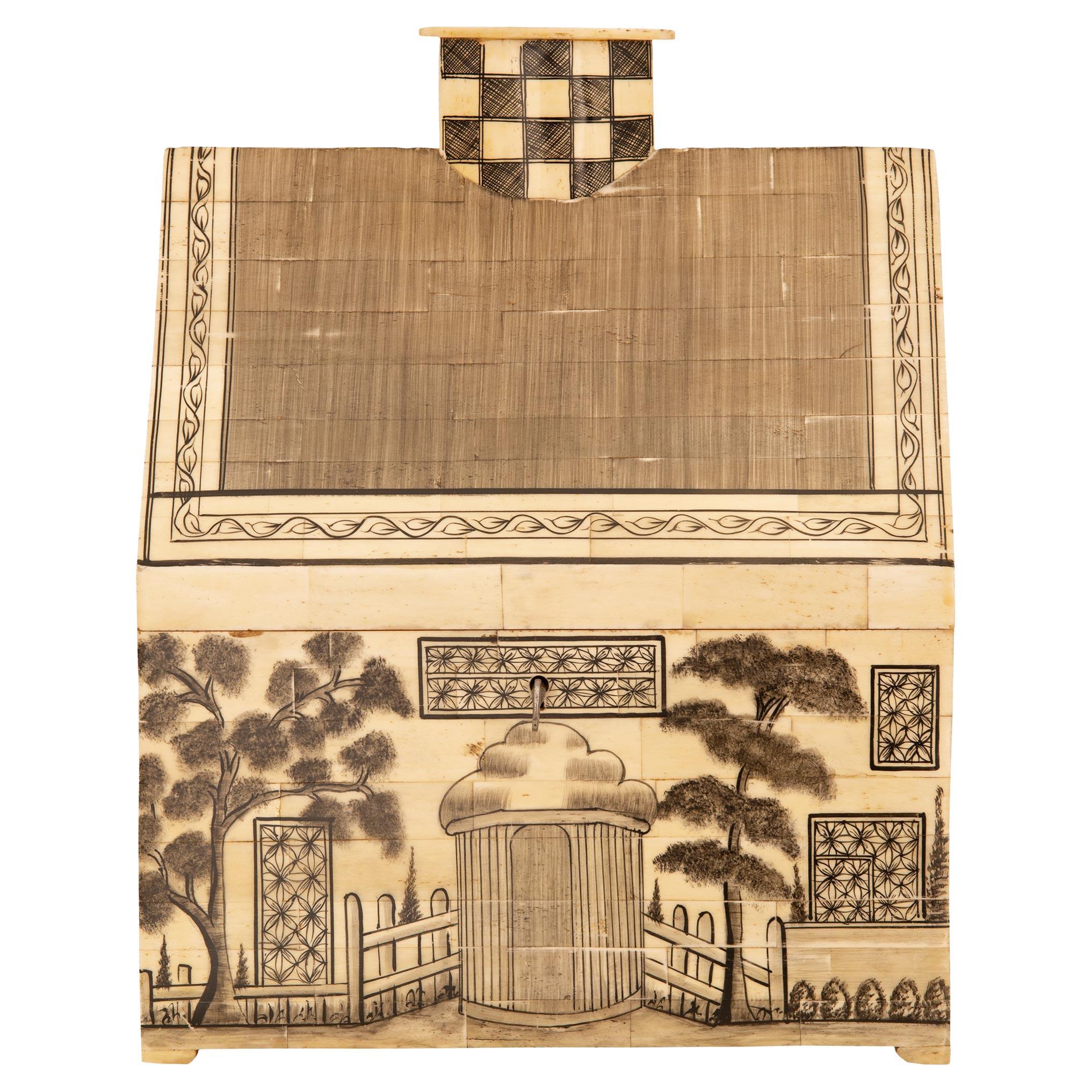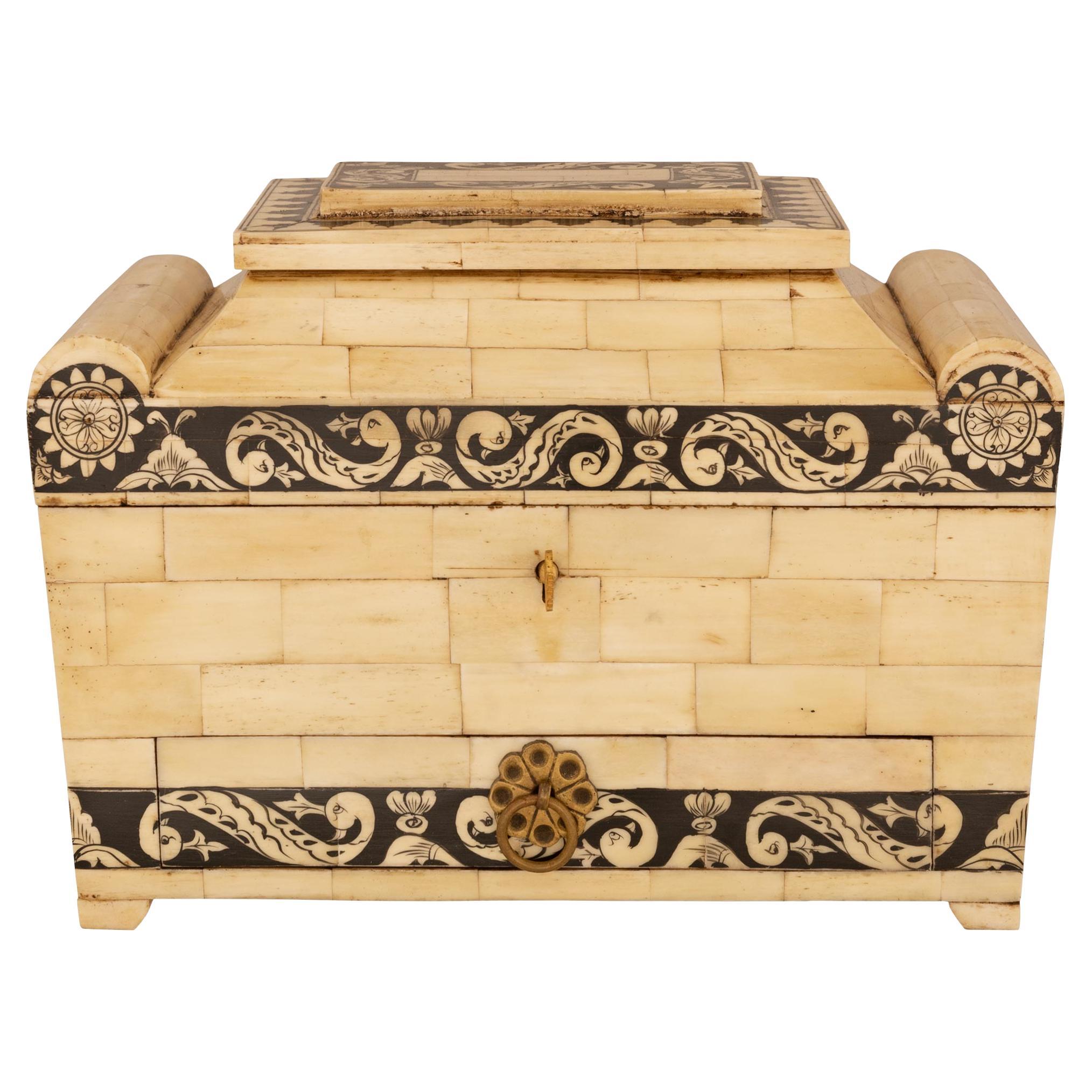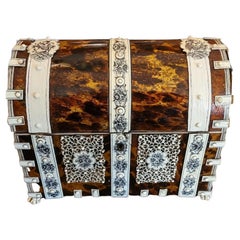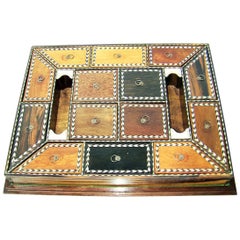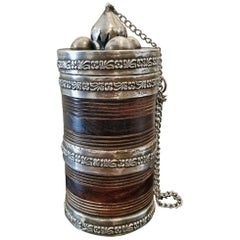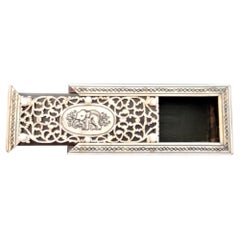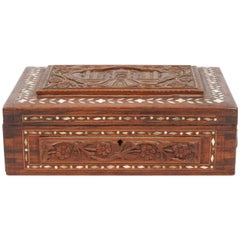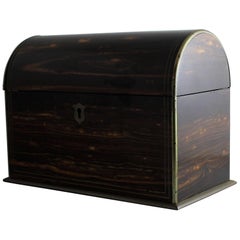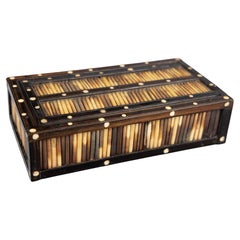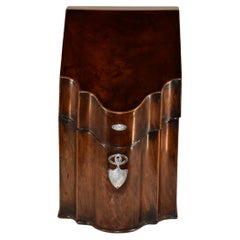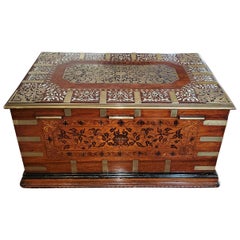
19th Century Anglo Indian Stationery Campaign Chest, Outstanding
View Similar Items
Want more images or videos?
Request additional images or videos from the seller
1 of 21
19th Century Anglo Indian Stationery Campaign Chest, Outstanding
Price:$6,000
$6,825List Price
About the Item
- Dimensions:Height: 12 in (30.48 cm)Width: 25 in (63.5 cm)Depth: 15 in (38.1 cm)
- Style:British Colonial (Of the Period)
- Materials and Techniques:
- Place of Origin:
- Period:
- Date of Manufacture:1897
- Condition:Wear consistent with age and use. Minor losses. Very good condition. Some very minor losses to the fretwork interior. See full details in listing.
- Seller Location:Dallas, TX
- Reference Number:1stDibs: LU3978119943762
About the Seller
4.9
Vetted Professional Seller
Every seller passes strict standards for authenticity and reliability
Established in 2015
1stDibs seller since 2018
389 sales on 1stDibs
Typical response time: 1 hour
Authenticity Guarantee
In the unlikely event there’s an issue with an item’s authenticity, contact us within 1 year for a full refund. DetailsMoney-Back Guarantee
If your item is not as described, is damaged in transit, or does not arrive, contact us within 7 days for a full refund. Details24-Hour Cancellation
You have a 24-hour grace period in which to reconsider your purchase, with no questions asked.Vetted Professional Sellers
Our world-class sellers must adhere to strict standards for service and quality, maintaining the integrity of our listings.Price-Match Guarantee
If you find that a seller listed the same item for a lower price elsewhere, we’ll match it.Trusted Global Delivery
Our best-in-class carrier network provides specialized shipping options worldwide, including custom delivery.More From This Seller
View All19C Anglo Indian Vizagapatam Bone and Shell Domed Stationery Box
Located in Dallas, TX
PRESENTING A LOVELY 19C Anglo Indian Vizagapatam Bone and Shell Domed Stationery Box – ‘Alice’s Box’.
Made in Vizagapatam, India, circa 1860-80.
We call this one: “Alice’s Box”! It has lived ‘a hard, well used and traveled life’, as is evident from the number of losses and repairs, as is obvious from the photos, especially to the faux ivory panels and bands to the top. The bonus to the loss of the frieze panels to the dome has a ‘bonus’, however, as their loss has revealed the most GORGEOUS faux blonde tortoiseshell underneath!
The box is dome/casket shaped.
The top has 3 bands, with the center one being the original. The 2 side bands are later ivorine.
The faux ivory and hand-painted medallions on the domed lid, have been saved and they depict Hindu Gods, Vishnu and Shiva.
The front and side panels are still in pretty good shape and are decorated with lac ink (indelible ink made from crushed beetles) depicting lovely floral designs.
The domed lid open to reveal a series of open compartments for envelopes, writing paper etc. and one lidded panel for stamps.
Inside the box are 2 paper labels: one probably being the original item ticket and the other with:
” Alice’s address is 272 Ashworth Ave, Toronto 4, Ontario”.
Probably, the original owner? Hence, we call it ‘Alice’s Box’.
What a journey/life this box has had!
Made in India, made its way to Canada, back to Ireland and then to Texas!
This is why, WE LOVE ANTIQUES...
Category
Antique 19th Century Indian Anglo-Indian Decorative Boxes
Materials
Bone, Shell, Sandalwood
19th Century Anglo Ceylonese Specimen Wood Desk Companion Tray
Located in Dallas, TX
Another stunning 19th century Anglo-Ceylonese piece.
Made circa 1880 in Ceylon (Now Sri Lanka) of Coromandel wood and specimen woods.
This is a simply gorgeous and quality item!! Tray made of various compartments with various high quality specimen wood lids, all edged and banded in chevrons of bone, silver or pewter and ebony.
The tray itself is made of expensive coromandel wood. There are two open sections on either side of the tray which have bone and hand-painted lac ends. The main tray sits onto a base made of coromandel wood with green baize lining.
This tray could have a number of practical uses, for keeping stationary, watches, jewelry, or thinking outside of the box, holding you remote controls and candy!!
We have a matching box also in our Inventory and for auction.
ANGLO-INDIAN AND CEYLONESE BOXES: Anglo Indian boxes were made in India for the English residents from the early part of the 18th century. They were brought back or sent back to England usually by the people who had commissioned them. From the beginning of the nineteenth century they were imported more commercially, although not in any significant numbers until the middle decades. They were very highly valued, especially the early ones, to the extent that the designs were copied on late 19th and early 20th century tins.
Anglo-indian Boxes normally consist of 3 main types:-
(1) Most of the best and highest quality Anglo-Indian boxes in the 18th and 19th Centuries were made in Vizagapatam, India, renowned for its exquisite craftsmanship in using ivory and tortoiseshell and lac decoration. These are referred to as ‘Vizagapatam Boxes...
Category
Antique Late 19th Century Sri Lankan British Colonial Decorative Boxes
Materials
Ebony, Wood
19th Century Anglo-Indian Spice or Tea Caddy with Silver Mounts
Located in Dallas, TX
PRESENTING A GORGEOUS 19C Anglo Indian Rosewood Caddy with Silver Mounts.
Really nice and unusual, 19th Century Anglo-Indian Spice or Tea Caddy, from cir...
Category
Antique Late 19th Century Indian Anglo Raj Tea Caddies
Materials
Sterling Silver
19C Anglo Indian Vizigapatam Stamp Box
Located in Dallas, TX
Presenting an absolutely gorgeous and very rare 19C Anglo Indian Vizigapatam stamp box.
Made in Colonial India (the Time of the Raj) circa 1860.
Prob...
Category
Antique Mid-19th Century Indian Anglo-Indian Decorative Boxes
Materials
Bone, Shell
19C Anglo Indian Bombay MOP Sadeli Mosaic Trinket Box
Located in Dallas, TX
PRESENTING a LOVELY 19C Anglo Indian Bombay MOP (Mother of Pearl) Sadeli Mosaic Trinket Box from circa 1875-85.
Gorgeously detailed and hand-crafted ‘sadeli mosaic’ inlay, from the Bombay Area, with deep greens with silver, pewter, mother of pearl, bone and ebony in geometric patterns.
The box case, is made of sandalwood but completely covered in MOP, bone, faux ivory, ebony and mosaic inlay.
Edged with faux ivory and banded with a different pattern of sadeli mosaic.
Some minor damage to the top (repair is obvious in pics) and ivorine replacements to some edging, but it still a BEAUTIFUL BOX and of real QUALITY!
The mosaic work is FABULOUS!
Box opens to reveal its original blue velvet lining.
It sits on 4 (recently added) silvered button feet.
SADELI MOSAIC: “Anglo Indian boxes were made in India for the English residents from the early part of the 18th century. They were brought back or sent back to England usually by the people who had commissioned them. From the beginning of the nineteenth century they were imported more commercially, although not in any significant numbers until the middle decades. They were very highly valued, especially the early ones, to the extent that the designs were copied on late 19th and early 20th century tins.
The ancient art of Sadeli Mosaic is said to have been introduced from Shiraz in Persia via Sind to Bombay, a long time before the Anglo Indian boxes were made. It was a technique, which required a high degree of skill and patience. It was executed very lavishly, in that the frequent cuts wasted a great amount of the precious materials used. The workmanship was however more than commensurable to the value of the materials.
Ivory, silver, pewter (or other metals), wood and horn were cut into faceted rods which were bound together to form geometric patterns. When the glue has set, the rods were sliced in transverse sections. This gave the maker a number of angled circular pieces in the original pattern. Several variations of patterns could be achieved by combining the materials in different ways. The ivory was sometimes dyed green to give an extra color.
The mosaic pieces in a combination of patterns, often separated by ivory, ebony, horn or silver stringing were used to veneer sandalwood boxes. In the early boxes, which date from the turn of the 18th to the 19th century, there are large panels of mosaic covering tops and sides of boxes. It took incredible skill to cover such large areas without any shakes or wavering of the pattern. The corners and joins on these boxes are impeccably matched.
The makers (reputed to be Persian) of Sadeli mosaic made in the first two decades of the 19th century displayed a total understanding of the qualities of the different materials they used. They combined substances, which can expand and contract according to atmospheric conditions with others, which are hard and unyielding. The result was a sharp definition of the lines and patterns, which made up the whole design.
On the early boxes the designs look deceptively simple. The fact is, they emerged from a culture, which had mastered geometry and understood how to generate a pattern from a set number of points. The patterns are so harmoniously combined that their incredible complexity is not immediately apparent.
The earliest Sadeli boxes...
Category
Antique Late 19th Century Indian Anglo-Indian Jewelry Boxes
Materials
Silver
19C Anglo Indian Carved Teak Wood and Sadeli Mosaic Box
Located in Dallas, TX
PRESENTING A LOVELY 19th century Anglo-Indian Carved Teak Wood and Sadeli Mosaic Box, featuring a carving of a Hunt Scene.
Made circa 1870 in Bombay, India during the Rule of the Br...
Category
Antique Late 19th Century Indian Anglo-Indian Jewelry Boxes
Materials
Silver, Pewter
You May Also Like
19th Century Anglo-Indian Mughal Box
Located in North Hollywood, CA
19th century Anglo-Indian Mughal wood box, inlaid and hand carved with the Taj Mahal and some flowers all around.
Jewelry box, Anglo-Raj box from India in great condition.
Nice Mughal Bombay Box...
Category
Antique Late 19th Century Indian Anglo Raj Decorative Boxes
Materials
Sandalwood
19th Century Wood Stationery Box
Located in Hamilton, Ontario
19th century wood stationery box.
Category
Antique 19th Century British Decorative Boxes
19th Century Anglo Indian Ebony & Porcupine Quill Box
Located in Pearland, TX
A fine antique 19th-Century British Colonial porcupine quill and ebony box, made in Ceylon the colonial name for Sri Lanka. This fine hand crafted box has a sliding lid and is decora...
Category
Antique 19th Century Sri Lankan Decorative Boxes
Materials
Ebony, Bone
Early 19th Century Converted Stationery Box
Located in High Point, NC
Early 19th century stationery box, which has been converted from a knife box. It is a classic serpentine shape in the front, with the edges inlaid in boxwood. There is a central ...
Category
Antique Early 19th Century English Georgian Decorative Boxes
Materials
Boxwood, Mahogany
19th Century Anglo-Indian Hand Carved Tropical Wood Box
Located in Marbella, ES
19th century Anglo-Indian hand carved tropical wood box.
Category
Antique Mid-18th Century Indian Decorative Boxes
Materials
Fruitwood
Unusual 19th Century, Anglo-Indian Style Dutch Paneled Basket
Located in Atlanta, GA
This unique 19th-century basket combines Dutch craftsmanship with Anglo-Indian stylistic influences, resulting in a truly distinctive piece. The box features paneling across the main...
Category
Antique 19th Century Danish Anglo-Indian Decorative Boxes
Materials
Brass
$716 Sale Price
20% Off
